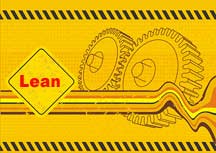Body
 Lean was initially started in manufacturing and production departments, and various efforts are being made to apply its principles in service industries. In a highly industrialized world spurred by high technological changes, businesses are forced to change their strategies to a more lean way of doing things to survive in the market. In the 1980s products were produced in batches and bulk, and overproduction or lack of market for the products became the biggest problem. In the book The Toyota Way (McGraw-Hill, 2006) Jeffrey Liker points out that Toyota considers overproduction to be the worst of the seven types of waste because it leads to other types of waste: inventory, movement, handling, hidden defects, etc.
Lean was initially started in manufacturing and production departments, and various efforts are being made to apply its principles in service industries. In a highly industrialized world spurred by high technological changes, businesses are forced to change their strategies to a more lean way of doing things to survive in the market. In the 1980s products were produced in batches and bulk, and overproduction or lack of market for the products became the biggest problem. In the book The Toyota Way (McGraw-Hill, 2006) Jeffrey Liker points out that Toyota considers overproduction to be the worst of the seven types of waste because it leads to other types of waste: inventory, movement, handling, hidden defects, etc. Literature review
Fred E. Meyers has described lean as “a concept whereby all production people work together to eliminate waste.” Peter Brunn and Robert Mefford introduced their research article "Lean Production and the Internet" by stating that many manufacturing firms around the world have adopted lean production as a strategy to increase their global competitiveness. Some firms have made much progress in implementing lean production in their factories.
…
Want to continue?
Log in or create a FREE account.
By logging in you agree to receive communication from Quality Digest.
Privacy Policy.
Add new comment